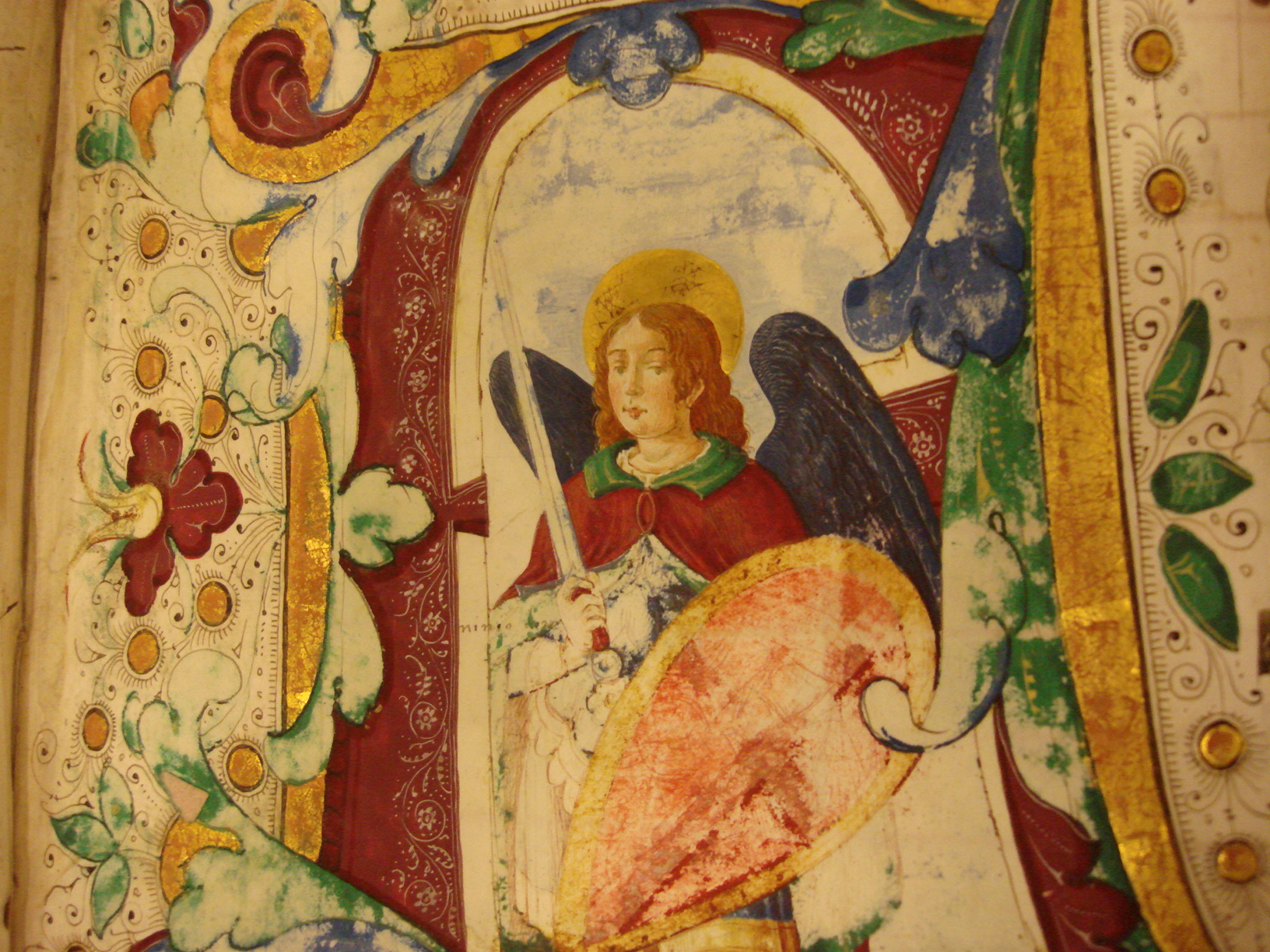
Historiated capital featuring Michael in a choir book, ca. 1450 (MSS 229, v. 1. Image by Petrina Jackson.)
As part of my duties as head of instruction and outreach, I am contacted each semester by many professors who wish to bring their classes to Special Collections, so that they can introduce them to original artifacts. This fall, all 10 sections of Professor John Dobbins’s History of Art I course paid a visit to Special Collections to explore our illuminated manuscript holdings. With 127 first-year students, four instructors, five Special Collections staff, and some of the most precious and delicate collection materials, I had a big project on my hands!
In preparation for the visit, Professor Dobbins and his teaching assistants, spearheaded by Tracy Cosgriff, arranged time in Special Collections to review our hand-decorated religious manuscripts, ranging from a fourteenth-century prayer book to a nineteenth-century Koran. From this meeting, they created a lesson plan. The lesson, which emphasized proper handling of rare materials and identification of the elements of medieval manuscripts, turned out to be a well-balanced collaboration between Special Collections staff, the teaching assistants, and the students.
What we wanted students to take from the lesson:
- know how to request an item in Special Collections;
- know how to properly handle medieval manuscripts;
- be able to identify and describe the iconography in the manuscripts and relate it to its text;
- be able to explain some of the purposes of text in the margins of the books; and
- be able to identify the uses of the manuscripts.
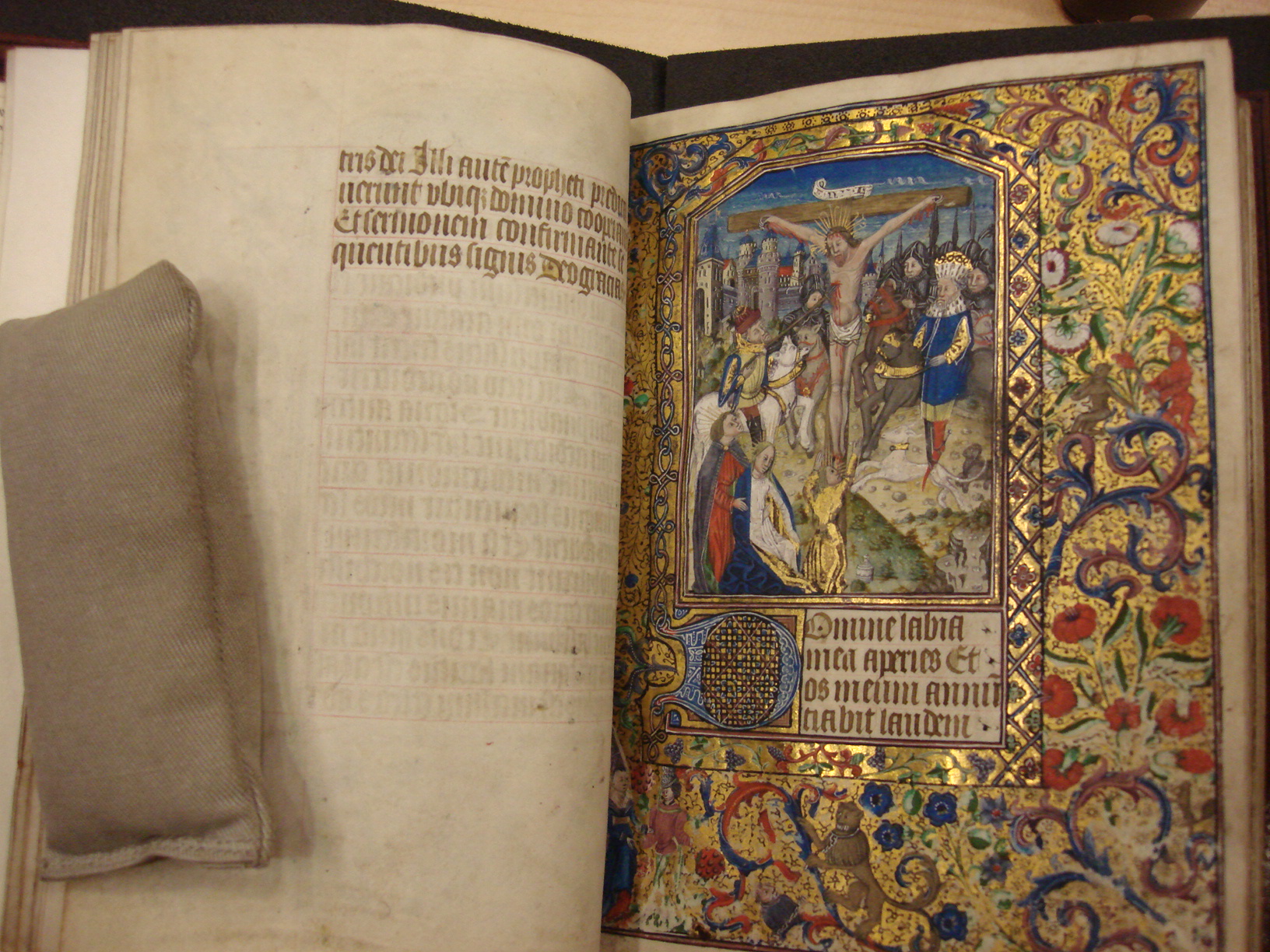
Illumination of Jesus on the cross from a French book of hours (M.Ms. P/MSS 38-728, Tracy W. McGregor Library. Image by Petrina Jackson)
Tools we used:
- nine manuscripts, including several French books of hours (prayer book), a large Italian choir book, an English Bible, and a Koran
- a worksheet with questions about the Special Collections policies and the examination of religious manuscripts
- pencils
What we did:
- Set manuscripts stations around the classroom.
- Special Collections staff gave a 10-minute overview of Special Collections, including how to request and handle materials.
- Teaching Assistant gave students assignment worksheets and explained them.
- Students went to a station and filled in the worksheet as it related to each manuscript. This step was repeated for each station.
- Special Collections staff assisted in the handling of the manuscripts and with questions.
- Teaching Assistants collected the completed worksheets and reviewed them for discussion in their next section meeting.
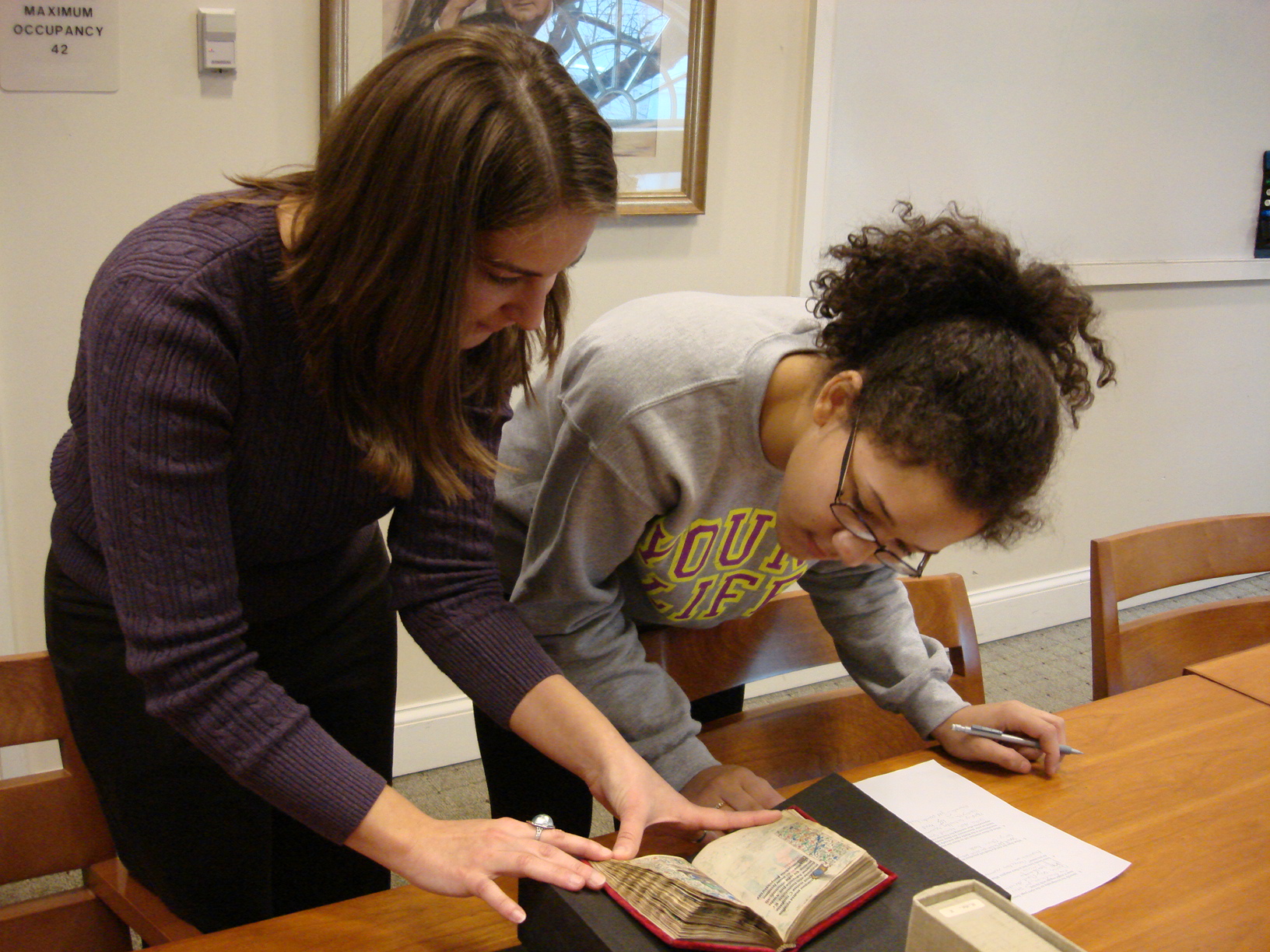
TA Alicia Dissinger and a student discuss the iconography in a book of hours. (Image by Petrina Jackson.)
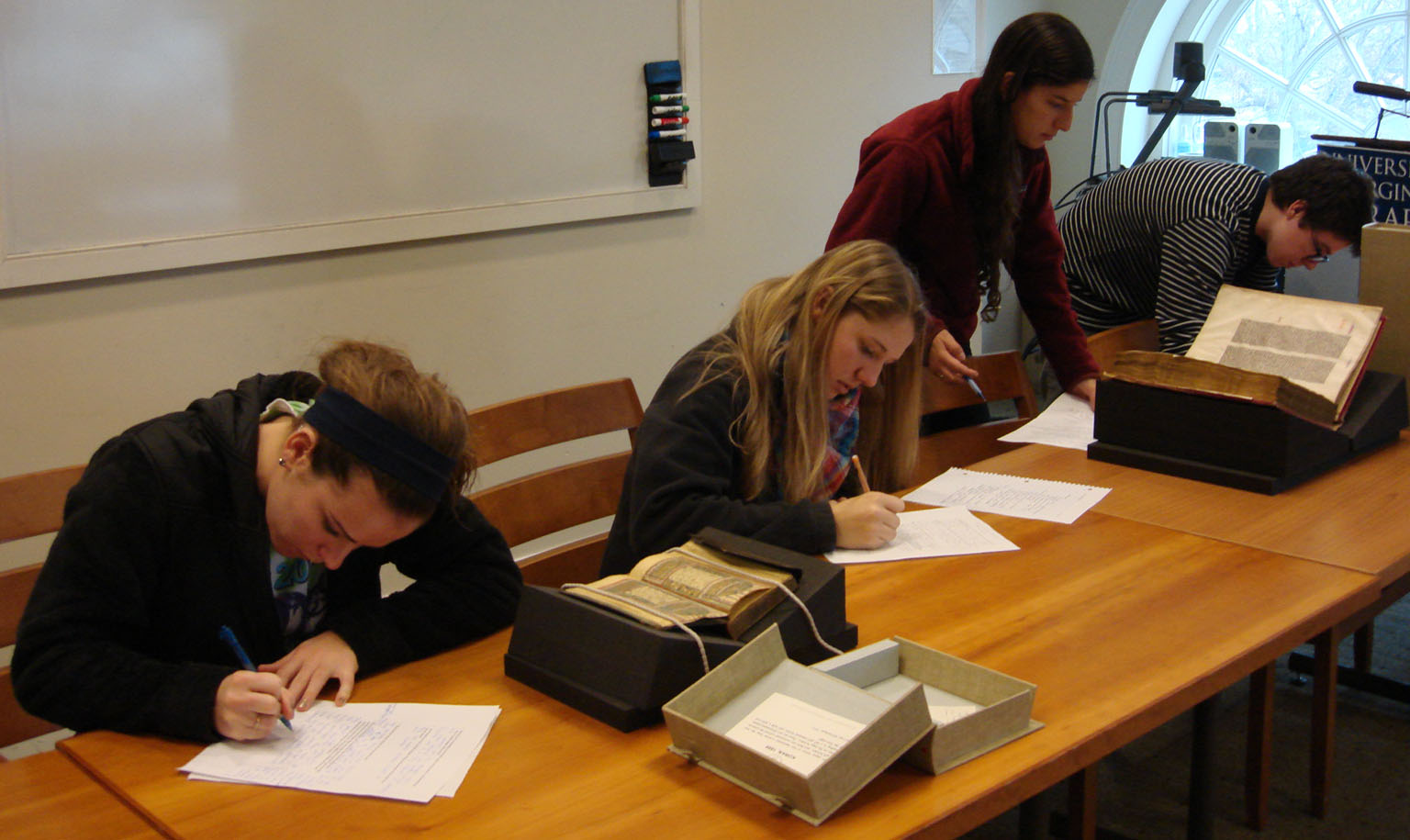
Students produce detailed descriptions of the physical characteristics of their assigned manuscripts. (Image by Petrina Jackson.)
Considering the number of people involved with the History of Art I section visits to Special Collections, it went extraordinarily smoothly and was a lot of fun. After the visits, I received an email from TA Tracy Cosgriff, which stated “[t]he students really enjoyed their lesson in Special Collections, and many are still talking about it. Thank you so much again for making our visit such a pleasure!” Although that was not a stated learning outcome, I am always happy to hear that students are talking about their time with us long after it has ended.


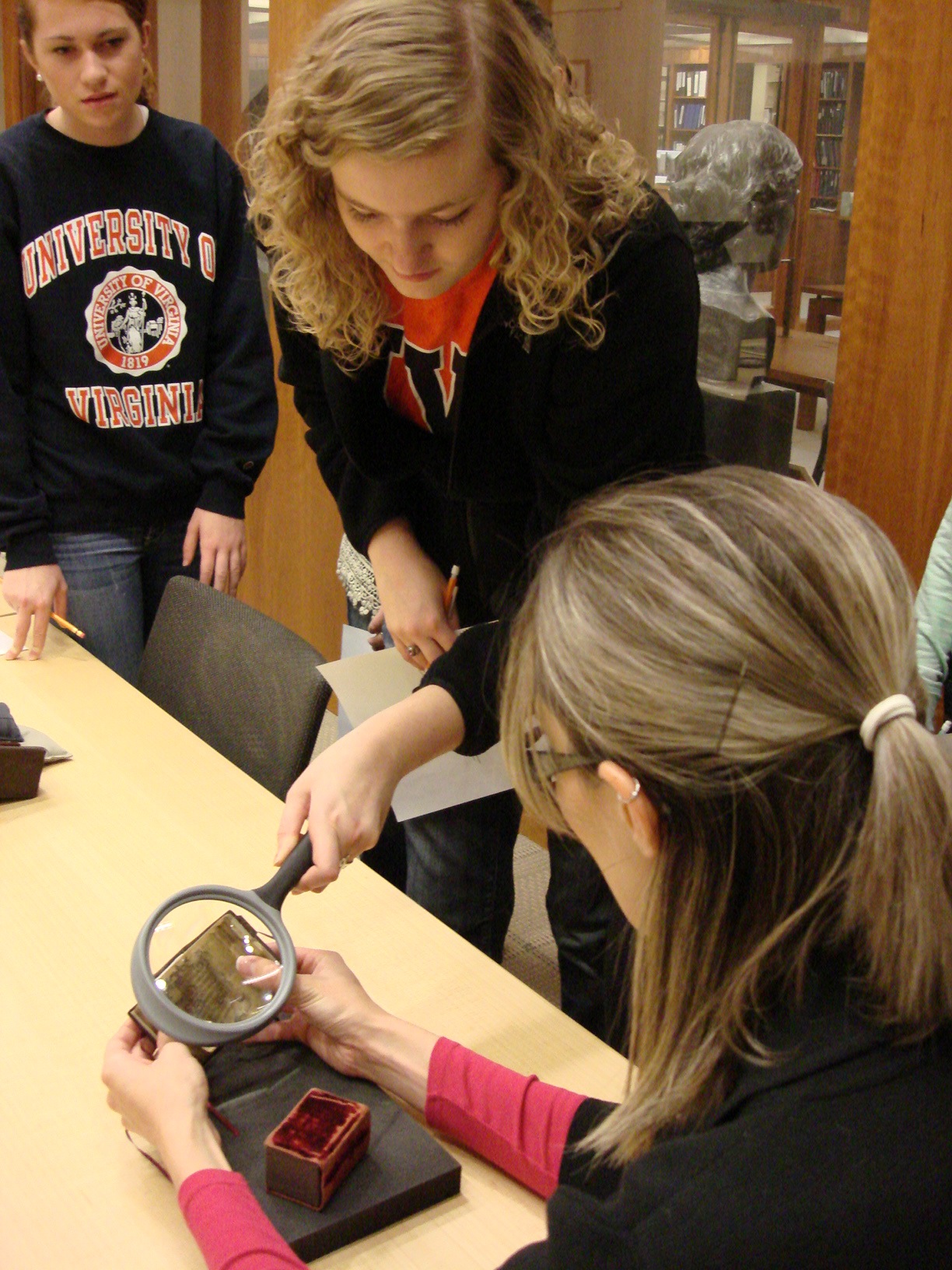

Great photos! Very interesting entry.